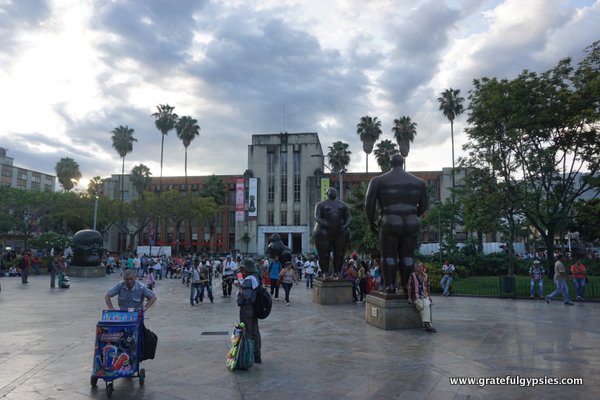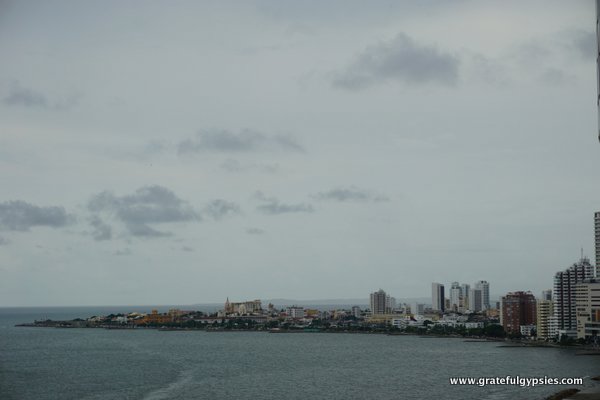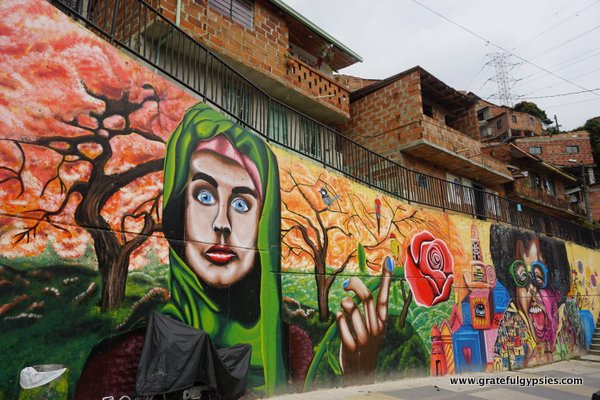An Intro to Colombian Spanish Posted by sasha on Aug 29, 2018 in Spanish Vocabulary
If you’re thinking about relocating to a Spanish-speaking country to learn the language, Colombia is a great choice. Colombian Spanish is said to be quite clear and standard, although that depends on who you ask. Personally, I had a great time studying Spanish in Medellín and would highly recommend it. In this post, I’ll give a short intro to español colombiano (Colombian Spanish).
Colombian Spanish
There are plenty of interesting aspects of Colombian Spanish. Although Colombian Spanish is said to be pretty standard, they do have a tendency to mispronounce some letters. This is known as comerse las letras (eating the letters). One common example of this is how people in Colombia tend to not pronounce the letters B and D when they come at the end of a word. As such, the word cansado (tired) may sound more like cansa-o.
In many Spanish speaking countries, people don’t distinguish between the LL and Y sounds. This is known as yeísmo. While much of Colombia follows this, some places don’t, including Medellín. Actually, the name of the city itself is a great example. People from there pronounce it more like Me-de-JIN instead of Me-de-YIN. Go ahead and give it a try:
Another thing that’s very common in Colombian Spanish is the use of the diminutives –ita and –ito. For example, a coffee becomes un cafecito. However, sometimes this is changed to –ica or –ico if the word stem ends in the letter T. That means a kitten may be called un gatico.
Different Accents
Just like most other countries around the world, you’ll hear different accents across Colombia. The biggest difference comes between the people on the coast and the rest of the country. This is due to the influence of the history of coastal cities like Cartagena. When the Spanish colonized the country, they used port cities like this for the slave trade. The resulting influence from Africa had a lasting impact on the language here. You’ll hear a lot of slang on the coast and find that their Spanish sounds quite different from the way people speak in other parts of Colombia.
There are even special names given to the people and their accent in different parts of the country. Here are just a few:
- Rolo/Bogotano – Bogota
- Paisa – Medellín
- Costeño or Carribeño – from the coast
- Valluno – Valle del Cauca in southern Colombia
- Amazónico – the Amazon region
Typical Colombian Words and Phrases
When traveling around Colombia, there are some common phrases you should be familiar with. Here are a few of them. Note that many of these are specific to the Paisa accent, as I spent most of my time in Medellín.
A la orden – This basically means “at your service,” and you’ll hear it all the time from vendors, waiters, taxi drivers, and so on.
Con gusto – Instead of hearing de nada, you’ll hear Colombians say this phrase which means “with pleasure.” It’s one of the many ways that Colombian Spanish is very polite.
Su merced – Speaking of politeness, this phrase meaning “your mercy” is often used in Colombia to simply mean “you.” It’s a common way to address your elders or superiors.
Parce/parcero – The Colombian way of saying “dude” or “bro.”
Pues – On its own, this word just means “well.” Colombians love using it in many different phrases, such as:
- Hágale pues – go for it; just do it
- Que mas pues? – Well what’s up?
…o qué? – This just means “or what?” and it’s used much in the same way as it is in English. For example, you could ask your friend “Estas bien o qué?” (Are you OK or what?).
Bacano/chévere – These words can be used to mean “cool” or “awesome.”
Guayabo – After a night of drinking too much aguardiente, you’ll have one of these (a hangover).
No dar papaya – This popular phrase – “Don’t give papaya” – basically means “don’t let yourself be taken advantage of.” For tourists, that means not letting your wallet hang out of your backpack or walking around the city center staring at your fancy phone.
Extra Practice
For more words and some extra practice, check out this video on 26 Colombian words:
Here’s a great video for some listening and reading practice. The hosts interview people all across Medellín to hear what their favorite place in the city is:
Have you been to Colombia? How did you find Colombian Spanish? Leave a comment and let us know!

Build vocabulary, practice pronunciation, and more with Transparent Language Online. Available anytime, anywhere, on any device.







